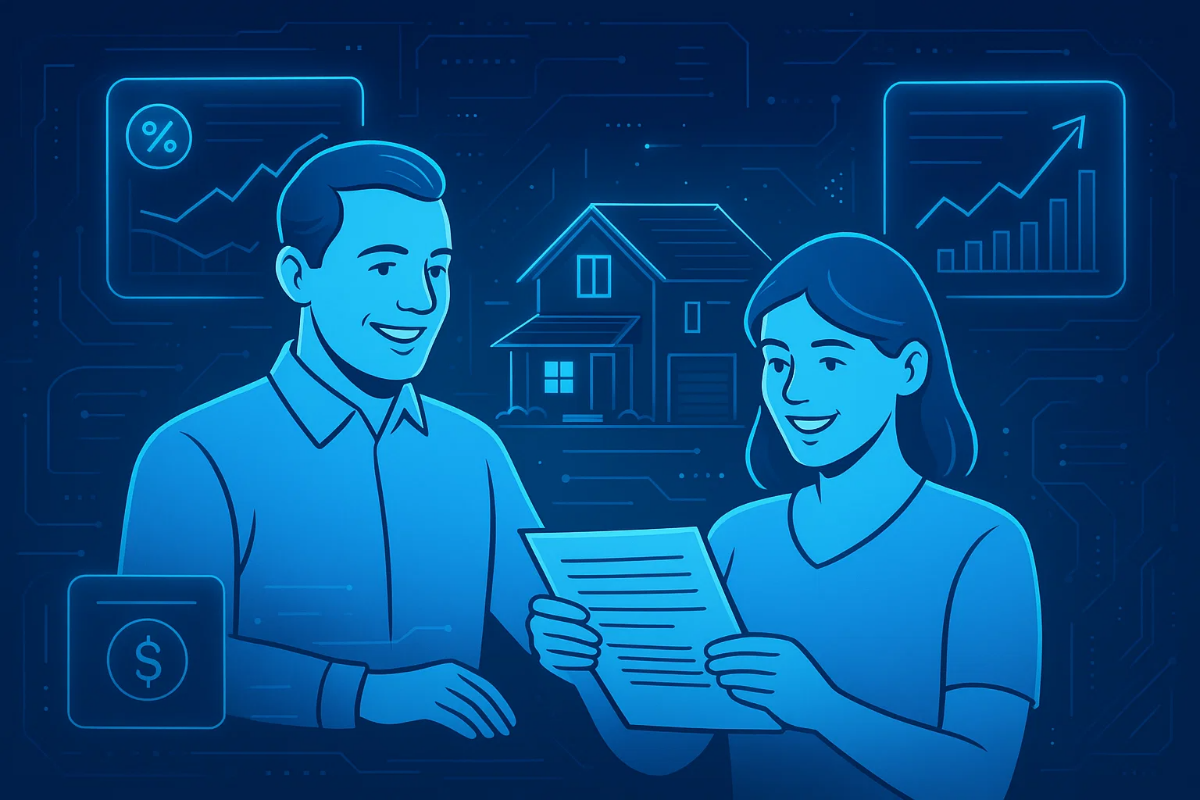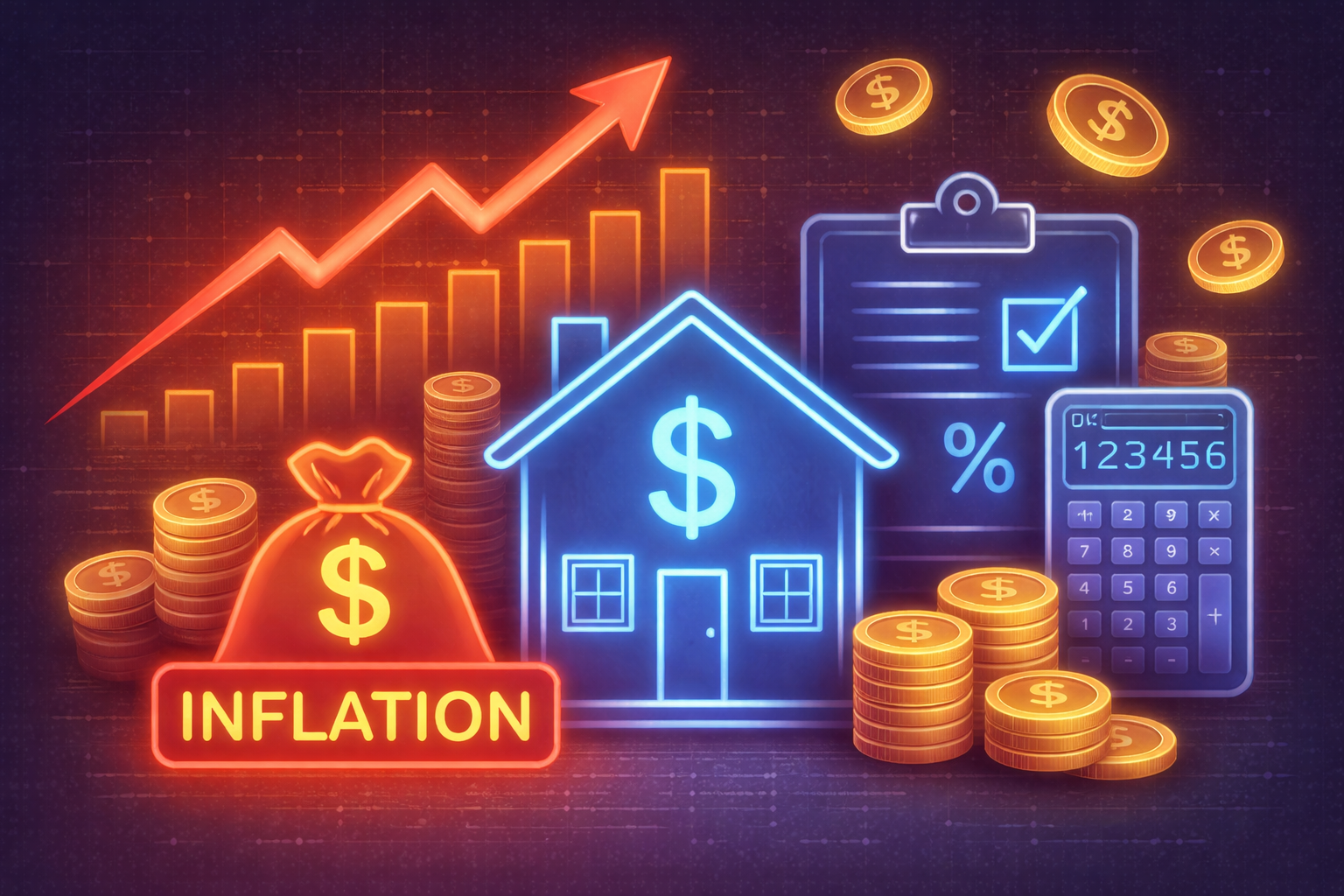Introduction
Buying a home is one of the biggest financial decisions most people ever make, and qualifying for a mortgage is often the largest hurdle in the process. Mortgage lenders evaluate a wide range of financial and personal factors to determine whether you are a reliable borrower. Understanding these criteria—credit score, income, debt, employment, and savings—can dramatically improve your chances of approval and help you secure better interest rates. This guide offers practical, expert-level insight into what lenders look for and how you can prepare.

What Mortgage Lenders Evaluate When Reviewing Your Application
Mortgage underwriting isn’t guesswork. Lenders use clear standards to measure your financial behaviour, risk level, and long-term stability. Institutions like Fannie Mae, Freddie Mac, Bank of America, and Wells Fargo follow similar guidelines to ensure responsible lending.
Below are the core areas lenders examine closely.
Credit Score Requirements: Why They Matter
How Your Credit Score Influences Mortgage Approval
Your credit score is one of the strongest indicators of your reliability as a borrower. The higher your score, the lower the risk for the lender, which often leads to better loan terms.
Typical score thresholds:
-
760+ — Excellent; access to the best rates.
-
700–759 — Very good; competitive mortgage rates.
-
660–699 — Good; approval likely but with higher interest.
-
620–659 — Minimum requirement for many conventional loans.
-
Below 620 — Consider FHA or alternative programs.
What Makes Up Your Credit Score
Credit bureaus such as Equifax, TransUnion, and Experian use five factors:
-
Payment history
-
Credit utilization
-
Average account age
-
New credit inquiries
-
Credit mix
How to Improve Your Credit Before Applying
-
Pay all bills on time for at least six months.
-
Reduce credit card balances to below 30% utilization.
-
Avoid opening new credit lines.
-
Dispute inaccurate negative items.
Even a 20-point increase can lower your mortgage rate significantly.
Income Requirements: Proving You Can Afford the Mortgage
Types of Income Lenders Accept
Banks evaluate income consistency and ability to make monthly payments. Accepted income forms include:
-
Salary or hourly wages
-
Self-employment income (with tax returns)
-
Bonuses, commissions, or overtime
-
Rental income
-
Government benefits or pensions
Documents You Must Provide
Lenders usually require:
-
Recent pay stubs (last 30 days)
-
W-2 forms (last 2 years)
-
Full tax returns if self-employed
-
Bank statements for proof of deposits
-
Employment verification letter
Why Stability Matters
Lenders look for two or more years of stable earnings. Even strong income can be questioned if it fluctuates heavily.
Debt-to-Income Ratio (DTI): A Key Indicator of Affordability
Your DTI ratio compares monthly debt payments to gross monthly income. This metric helps lenders assess whether you can take on more debt.
Ideal DTI Ratios for Mortgage Approval
-
36% or less — Strong position
-
43% — Maximum for many conventional loans
-
50% — Often accepted for FHA loans
How to Lower Your DTI
-
Pay down credit cards or installment loans
-
Refinance high-interest debt
-
Increase income through a side job or contract work
-
Avoid financing large purchases before applying
A lower DTI shows financial discipline and reduces perceived lender risk.
Employment History and Job Stability
Why Lenders Care About Your Employment Background
Stable employment signals predictable income. Most lenders want to see:
-
Two years in the same industry
-
Consistent career progression
-
No unexplained employment gaps
What If You Recently Changed Jobs?
A job change is not automatically negative. It can be acceptable if:
-
You moved to a similar role in the same field
-
Your income increased
-
You provide a signed employment contract
New graduates entering a professional role may also qualify since degrees can count as “training experience.”
Down Payment Requirements and Savings
How Much You Need for a Down Payment
The required down payment varies by loan type:
-
Conventional loans: 3%–20%
-
FHA loans: 3.5% minimum
-
VA loans: 0% (for eligible veterans)
-
Jumbo loans: 10%–20%+
A larger down payment leads to better rates and lower monthly payments.
Why Savings and Cash Reserves Matter
Lenders evaluate how long you could continue paying your mortgage if you lost your income.
Typical reserve requirements:
-
2–6 months of mortgage payments saved
-
More for jumbo loans or investment properties
How to Strengthen Your Savings Profile
-
Automate monthly transfers into a savings account
-
Reduce discretionary spending
-
Consider high-yield savings options (e.g., Ally, Marcus by Goldman Sachs)
Property Type and Loan Program Impact
How the Property Affects Approval
The loan’s risk isn’t just tied to your profile—it also depends on the property.
Lenders evaluate:
-
Condition of the home
-
Property value and appraisal results
-
Occupancy type (primary, secondary, investment)
Investment properties usually require higher credit scores and larger down payments.
Choosing the Right Loan Program
Common mortgage programs include:
-
Conventional loans — Best for strong credit applicants
-
FHA loans — Ideal for lower credit or smaller down payments
-
VA loans — Exclusive for veterans and service members
-
USDA loans — For rural homes with zero down payment
Selecting the correct program can significantly increase your approval odds.
Financial Red Flags That Can Delay Mortgage Approval
Issues Lenders See as High Risk
Even strong applicants can encounter challenges. Common red flags include:
-
Large unexplained deposits
-
Recent major purchases or new debt
-
Multiple recent credit inquiries
-
High credit utilization
-
Declining income
-
Unfiled or past-due taxes
How to Avoid These Problems
-
Keep financial activity stable for at least 90 days before applying.
-
Document gifts or transfers clearly.
-
Avoid major purchases (cars, furniture) until after closing.
How to Prepare for a Smooth Mortgage Qualification Process
Step-by-Step Checklist
-
Check your credit score from at least two bureaus.
-
Pay down revolving credit lines.
-
Gather all financial documents.
-
Estimate your DTI using an online mortgage calculator.
-
Avoid new debt or credit applications.
-
Build or increase your down payment savings.
-
Get pre-approved with a reputable lender.
Recommended Tools for Preparation
Websites and tools like Rocket Mortgage, Credit Karma, and NerdWallet provide calculators and pre-approval research to help you understand your standing.
Common Mistakes Homebuyers Make When Applying for a Mortgage
Mistake #1: Underestimating Closing Costs
Many buyers focus only on the down payment. Closing costs typically range from 2%–5% of the home price.
Mistake #2: Changing Jobs Before Closing
Switching roles or industries during the underwriting period raises concerns about income stability.
Mistake #3: Opening New Credit Lines
This can drop your credit score and increase your DTI.
Mistake #4: Ignoring Pre-Approval
Shopping without pre-approval reduces credibility with sellers and agents.
How Lenders Assess Risk: The Internal Process
Lenders use a mix of:
-
Automated underwriting systems (AUS)
-
Manual reviews by underwriters
-
Risk scoring models
-
Regulatory guidelines (Fannie Mae, Freddie Mac, CFPB rules)
Modern AUS tools evaluate thousands of data points, ensuring decisions are consistent and compliant.
Author’s Insight
When I bought my first home, the most surprising part of the mortgage process was how much weight lenders place on stability—especially income patterns. I had strong savings and credit, but a recent shift from freelance to corporate work raised questions. What helped me was maintaining clean financial activity and documenting everything clearly. A simple letter explaining the job transition solved the issue. That experience taught me that transparency and preparation can overcome most underwriting concerns.
Conclusion
Qualifying for a mortgage requires a clear understanding of what lenders look for: credit strength, stable income, manageable debt, employment reliability, and sufficient savings. By improving each area and avoiding common pitfalls, you increase your chances of approval and secure better mortgage terms. Whether you're a first-time buyer or upgrading, knowing how the qualification process works empowers you to make informed financial decisions and approach lenders with confidence.





